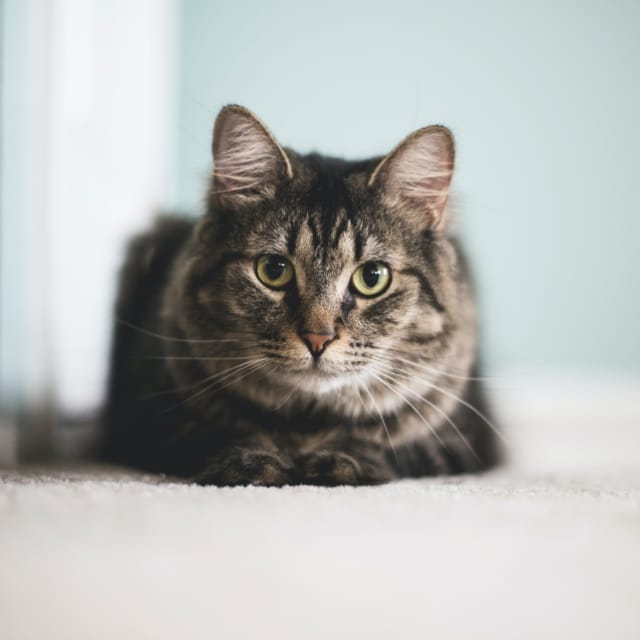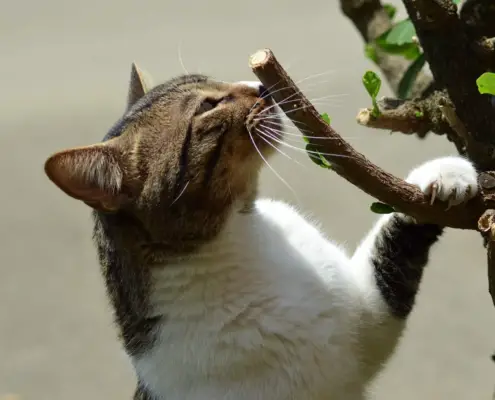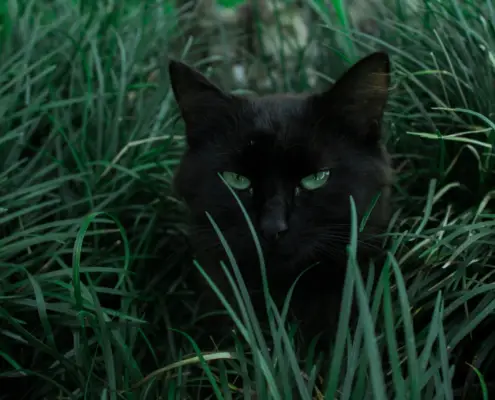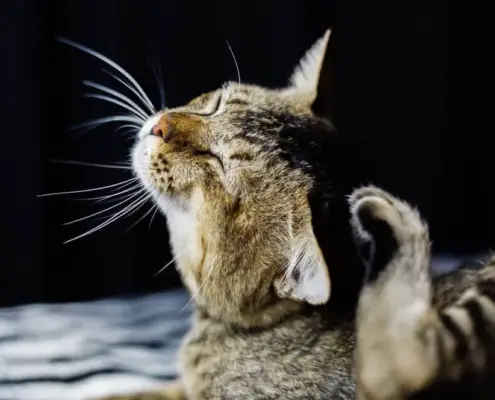
Cats have long fascinated humans with their mysterious behaviors and enigmatic expressions of emotions. One of the most intriguing aspects of feline communication is purring. The gentle rumbling sound that emanates from a contented cat has captivated cat owners for centuries. But what is the true meaning behind this melodic symphony of feline emotions? In this article, we will delve into the science behind cat purring, explore the reasons why cats purr, decode different types of purrs, and uncover what it truly means when cats purr.
The science behind cat purring
While the act of purring may seem simple, it is actually a complex physiological process that involves various parts of a cat’s body. When a cat purrs, the laryngeal muscles in its throat vibrate, resulting in the production of the characteristic purring sound. However, the origins of this vibration are still not fully understood. Some theories suggest that it is generated by the rapid movement of the cat’s vocal cords, while others propose that it is caused by the contraction and relaxation of the diaphragm muscles.
Furthermore, research has shown that purring is not limited to a single frequency. Cats can produce purrs that range from 20 to 150 Hertz, which is a frequency range that coincides with the healing frequencies known to stimulate tissue regeneration. This suggests that purring may have evolved as a self-soothing mechanism and a way for cats to promote healing and reduce stress.
Reasons why cats purr
Cats purr for a variety of reasons, and understanding these reasons can help us better interpret their emotions. One common reason for purring is contentment and relaxation. When a cat is in a peaceful and comfortable environment, it may purr as a way to express its satisfaction and well-being. Purring can also serve as a form of self-soothing for cats, helping them to calm down in stressful situations or to alleviate discomfort.
In addition, cats may purr as a means of communication. Mother cats often purr to their kittens, creating a bond and providing a sense of security. Similarly, cats may purr to seek attention or to express their desire for food or play. By understanding the context in which a cat is purring, we can decipher its intended message and respond accordingly.
Decoding different types of purrs
Not all purrs are created equal. Cats have the ability to produce different types of purrs, each with its own unique meaning. One type of purr is the contentment purr, which is low-pitched and rhythmic. This purr is typically associated with relaxation and can be heard when a cat is resting or being gently stroked.
On the other hand, cats may also produce a high-pitched purr when they are in pain or distress. This type of purr is often accompanied by other signs of discomfort, such as restlessness or aggression. It is important to pay attention to the context and other body language of the cat to accurately interpret the meaning behind this type of purr.
What it means when cats purr
When a cat purrs, it is generally a sign of positive emotions. It indicates that the cat is content, relaxed, and feels safe in its environment. It can also be a way for cats to express affection towards their human companions. By purring, cats are essentially saying, “I trust you, and I am happy to be with you.”
However, it is essential to note that not all purring is indicative of happiness. As mentioned earlier, cats may also purr when they are in pain or distress. Therefore, it is crucial to consider the overall context and the cat’s body language when interpreting the meaning behind its purring.
The emotional benefits of cat purring
Cat purring not only benefits the cat itself but also has positive effects on humans. The soothing sound of a purring cat has been found to reduce stress, lower blood pressure, and promote a sense of calmness. It can be particularly beneficial for individuals dealing with anxiety or depression, as the rhythmic vibrations have a comforting and therapeutic effect.
Furthermore, the act of petting a purring cat releases endorphins in the human brain, creating a sense of happiness and well-being. This mutual exchange of positive emotions strengthens the bond between humans and their feline companions, fostering a harmonious and fulfilling relationship.
How to interpret your cat’s purring
As a cat owner, it is essential to develop the ability to interpret your cat’s purring to better understand its emotions and needs. Pay attention to the context in which your cat purrs. Is it purring while being petted or when it is curled up in its favorite spot? These are usually signs of contentment and relaxation.
However, if your cat purrs while exhibiting signs of discomfort, such as tense body posture or growling, it may be a sign of pain or distress. In such cases, it is crucial to consult a veterinarian to rule out any underlying health issues. By observing your cat’s behavior and body language along with its purring, you can gain valuable insights into its emotional state.
Common misconceptions about cat purring
Despite its widespread popularity, there are several misconceptions surrounding cat purring. One common misconception is that cats only purr when they are happy. As discussed earlier, cats may also purr in situations of pain or distress. It is essential to consider the overall context and the cat’s behavior to accurately interpret the meaning behind its purring.
Another misconception is that all cats purr. While purring is a common behavior among domestic cats, not all cats have the ability to purr. Big cats, such as lions and tigers, cannot produce the same purring sound due to structural differences in their vocal cords. Instead, they produce a similar rumbling sound called “chuffing.”
Tips for creating a purr-friendly environment for your cat
Creating a purr-friendly environment for your cat is essential to promote its overall well-being and happiness. Here are some tips to ensure a purrfect environment for your feline companion:
- Provide a comfortable and safe space for your cat to rest and relax.
- Offer a balanced and nutritious diet to keep your cat healthy.
- Engage your cat in regular play and exercise to prevent boredom and promote mental stimulation.
- Establish a routine and provide a predictable environment to reduce stress and anxiety.
- Create vertical spaces, such as cat trees or shelves, for your cat to perch and observe its surroundings.
- Offer scratching posts and toys to fulfill your cat’s natural instincts.
By implementing these tips, you can create a purr-friendly environment that will enhance your cat’s overall well-being and strengthen the bond between you and your furry friend.
Celebrating the enigmatic symphony of feline emotions through purring
In conclusion, cat purring is a fascinating and complex behavior that holds significant meaning in the feline world. Whether it signifies contentment, communication, or a cry for help, understanding the nuances of cat purring allows us to connect with our feline companions on a deeper level. By celebrating the enigmatic symphony of feline emotions through purring, we can forge a stronger bond with our beloved cats and provide them with the love and care they deserve.
Remember to listen to your cat’s purring, observe its body language, and create a purr-friendly environment. This will not only ensure your cat’s happiness but also enrich your own life through the soothing and therapeutic effects of this melodic symphony of feline emotions. So, embrace the purr and let it guide you towards a deeper understanding of your cat’s world.
If you enjoyed my article, I would appreciate you sharing it with your network.

Sima Ndlebe
Sima writes for CatBuzz. He is interested in Cats, Health and Fitness, and Entrepreneurship.
Published: 13 October 2023
Related Articles
Disclaimer
The content found on CatBuzz.org is presented on an "as is" basis and is intended for general consumer information and education purposes only. Any utilization of this information is voluntary and solely at the user's own risk.
None of the articles or content should be regarded as, or used in place of, veterinary medical advice, diagnosis, or treatment. The information provided on the website is purely for educational and informational intentions and should not be considered a substitute for professional guidance from a veterinarian or other qualified expert. The articles are designed to inform consumers about veterinary healthcare and medical matters that may impact their cat's daily life. It should be noted that this website and its services do not constitute the practice of any form of veterinary medical advice, diagnosis, or treatment. CatBuzz.org explicitly disclaims any liability for any direct or indirect damages or losses that may arise from the use of or reliance on the information contained within the content.
Consumers must consult a veterinarian, veterinary specialist, or another qualified veterinary healthcare provider when seeking advice regarding their cat's health or medical conditions. It is important not to ignore, avoid, or postpone seeking medical advice from a veterinarian or other qualified veterinary healthcare provider solely based on information obtained from this website. If you believe that your cat may be experiencing a medical issue or condition, it is imperative to promptly contact a qualified veterinary healthcare professional.




